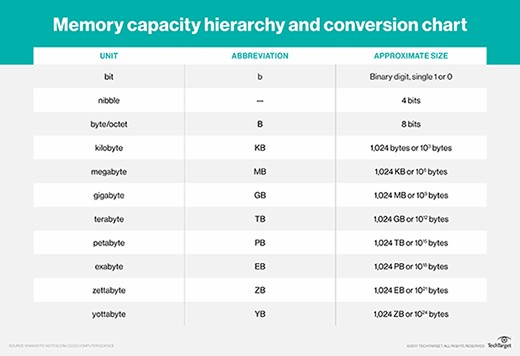A terabyte (TB) is significantly larger than a gigabyte (GB). In the ever-expanding world of digital data, understanding these units of measurement is crucial. This article explains the difference between a terabyte and a gigabyte, provides real-world examples of what a terabyte can hold, and explores the scale of data storage units.
Understanding the Difference: TB vs. GB
The difference between a terabyte and a gigabyte lies in their respective sizes:
-
One terabyte (TB) is equal to 1,024 gigabytes (GB). Think of it this way: a terabyte is like having a thousand gigabytes all in one place.
-
One gigabyte (GB) is equal to 1,024 megabytes (MB). And a megabyte is, in turn, equal to 1,024 kilobytes (KB). This hierarchical structure, based on powers of 1024 (2^10), forms the foundation of digital data measurement. Each unit is 1,024 times larger than the one preceding it.
Why the Difference Matters
As data storage needs continue to grow, understanding these units becomes essential for choosing the right hard drive, SSD, or cloud storage plan. A terabyte hard drive, for example, can store significantly more information than a gigabyte drive.
Putting a Terabyte into Perspective
While abstract numbers like “1,024 GB” can be difficult to grasp, real-world examples can help visualize the vastness of a terabyte:
-
Approximately 500 hours of movies in HD quality. That’s over 20 days of continuous movie watching!
-
Around 310,000 photos taken with a standard digital camera. Enough to capture years of memories.
-
Roughly 17,000 hours of music. A truly extensive music library.
-
About 132,150 books, assuming each book has 650 pages. A personal library of epic proportions.
Beyond the Terabyte: The Data Scale
While the terabyte is a large unit, it’s not the largest. The scale of data measurement extends further to petabytes (PB), exabytes (EB), zettabytes (ZB), yottabytes (YB), and even brontobytes (BB). Each unit represents a thousandfold increase over the previous one, reflecting the exponential growth of data in our world.
From Bits to Bytes: How Data is Measured
The foundation of data measurement is the bit (binary digit), representing a single 0 or 1. Eight bits form a byte, the fundamental unit for measuring storage capacity. From there, the units scale up by powers of 1024: byte, kilobyte, megabyte, gigabyte, terabyte, and beyond. This system allows us to quantify and manage the vast amounts of data generated and stored every day.
Conclusion
A terabyte is substantially larger than a gigabyte, offering 1,024 times the storage capacity. This difference is significant when considering storage needs for various types of data, from personal files to large organizational databases. Understanding the scale of these units helps individuals and businesses make informed decisions about their data storage solutions.

